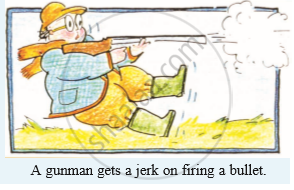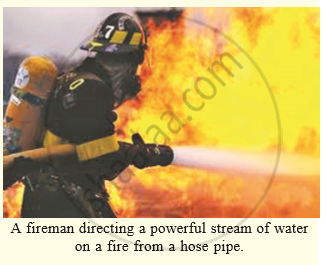Advertisements
Advertisements
प्रश्न
According to the third law of motion, when we push on an object, the object pushes back on us with an equal and opposite force. If the object is a massive truck parked along the roadside, it will probably not move. A student justifies this by answering that the two opposite and equal forces cancel each other. Comment on this logic and explain why the truck does not move.
उत्तर
- The truck has a large mass. Therefore, the static friction between the truck and the road is also very high.
- To move the car, one has to apply more force more than the static friction. Therefore, when someone pushes the truck and the truck does not move, then it can be said that the applied force in one direction is cancelled out by the frictional force of equal amount acting in the opposite direction.
- Therefore, a large, unbalanced force is required to move the truck.
- Therefore, the student is right in justifying that the two opposite and equal cancel each other.
APPEARS IN
संबंधित प्रश्न
If action is always equal to the reaction, explain how a horse can pull a cart.
Using a horizontal force of 200 N, we intend to move a wooden cabinet across a floor at a constant velocity. What is the friction force that will be exerted on the cabinet?
Why does a gunman get a jerk on firing a bullet ?
If action is always equal to reaction, explain why a cart pulled by a horse can be moved.
Explain why, a runner presses the ground with his feet before he starts his run.
Draw a diagram to show how a rocket engine provides a force to move the rocket upwards. Label the diagram appropriately.
Name the law involved in the following situation :
when person A standing on roller skates pushes another person B (also standing on roller skates) and makes him move to the right side, then the person A himself gets moved to the left side by an equal distance.
State Newton’s third law of motion and give two examples to illustrate the law.
Give scientific reasons.
It is easier to stop a tennis ball as compared to a cricket ball when both are travelling with the same velocity.
While catching a cricket ball the fielder lowers his hands backwards. Why?
